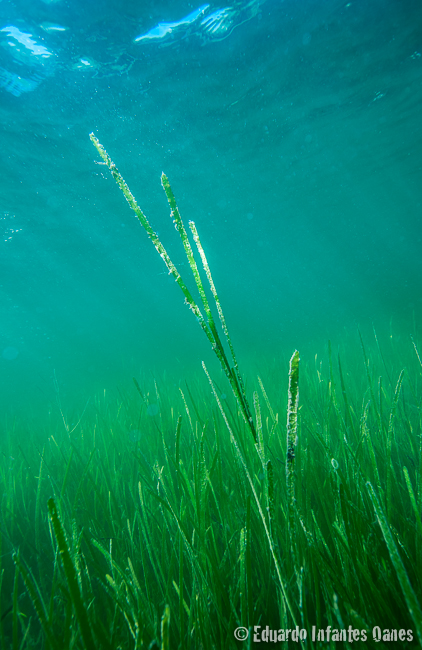ABSTRACT
Eelgrass (Zostera marina) flowering development and seed production were assessed along a depth gradient at three sites during 2012 and 2013 to 1) describe the flowering seasonality in the Swedish west coast, and 2) evaluate methods using seeds for large-scale restoration, including harvesting, storage and separation of viable seeds using a vertical flume.
Eelgrass flowering shoots were found in the field from June to October, reaching the highest densities in July and August (average 3.8±0.5 shoots m-2). Flowering shoot densities decreased with depth, whereas shoot length, number of spathes, seeds/shoot and seed size increased with depth, resulting in the highest seed production at intermediate depths (2 m) in most bays and years.
Because of low densities of flowering shoots, seed production in Sweden (on average 39-126 seeds m-2, Jul-Sep) was an order of magnitude lower than in other studied areas. Results showed that seed production differed 2.5-3.4 times between meadows and years, mainly driven by variation in seed production per shoot.This variation was only partly explained by temperature over the growing season, suggesting that other factors such as light and the amount of filamentous algal mats might also be important in flower development.
Results suggest that flowering shoots should be harvested when >50 % of the spathes have developing seeds, and that shoots should not be stored longer than 40 days in tanks to obtain an optimal release of viable seeds. A new mechanized method using a vertical flume to separate large amounts of viable seeds from the harvest is also presented.











